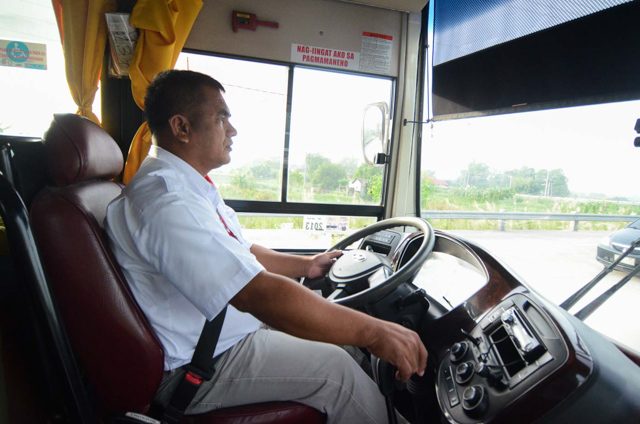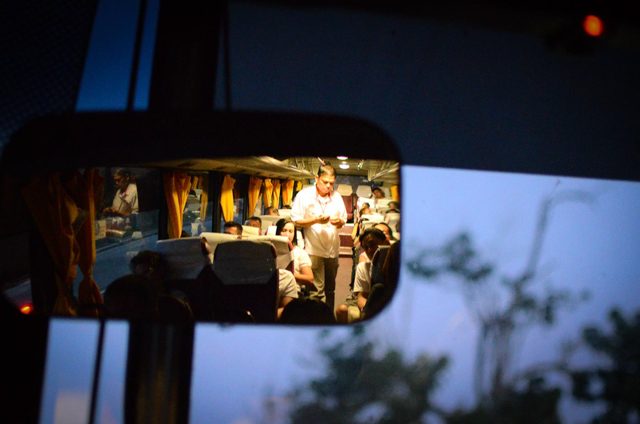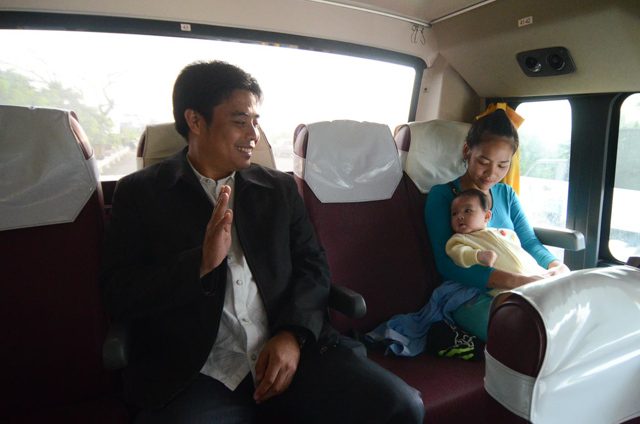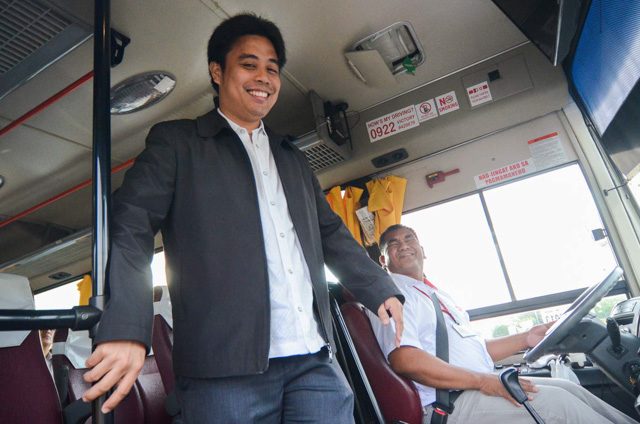SUMMARY
This is AI generated summarization, which may have errors. For context, always refer to the full article.

MANILA, Philippines – You can do a lot of things on a three-hour bus trip.
You can keep your eyes on the window for a moving geography lesson, and familiarize yourself with the different intersections, rivers, bridges, market stalls, malls, houses, and buildings and that distinguish one town from the other. You can finish a packed meal. You can make a phone call. You can take a nap next to a stranger, and wake up beside a new one. You can check your emails or social media accounts. (READ: 10 people you meet on a night bus trip)
On a single bus ride, you can do one or several or all these things, and still have enough time to make a new friend or two.
The Driver
Emmanuel Paule has been driving buses for 17 years.
For two years now, he, together with his conductor, Orlando Manuel, have been in charge of Bus #137’s daily morning trips to Olongapo City. The entire journey takes approximately three hours via NLEX, passing through the provinces of Bulacan and Pampanga, only pausing along the road for passengers who wait by the side of the highway.
At 4:58, Emmanuel settles into the driver seat while Orlando does a final count of their passengers. At exactly 5:00 am, the half-full bus exits the Balintawak terminal and heads toward the North expressway.

After passing through the tollgate in Bocaue, Orlando starts walking through the aisle, punching and handing out tickets. Chance passengers also start appearing by the roadside, and Emmanuel stops for them. He greets every passenger with a “good morning” as they step into the vehicle. Most of them smile and greet him back in return. One woman hands him a pack of hopia, and he accepts it with a nod and a thank you.
“They always have something to give me,” Emmanuel says in Filipino. “Sometimes, if they have relatives who are from abroad, they give us chocolate.”
Most of Emmanuel’s passengers are actually regulars or daily commuters, and he has stories about most of them. The woman who gave him the hopia, for example, is a teacher in Pampanga. Emmanuel says that she always sits in the front with her co-teachers who all live farther down the highway. True enough, they soon join her, climbing into the bus one after the other, as if on a roll call. They exchange merry banter with each other and with Emmanuel. It is not uncommon for bus crew to form friendships with their daily commuters.
There are other regulars, Emmanuel says. There are students, bankers, and there are also some businessmen. He knows where they usually wait, and where they always alight. He does not know all their names, but they all know his, and they all count on him to arrive at their waiting spot at the same time, every morning, without fail.
“You always need to drive safely, so that they arrive at their destinations safely,” Emmanuel says about his passengers. “I make sure to do that for them. I want them to keep coming back, to ride with my bus every day. I know they wait for me every morning. I don’t want to let them down.”
The Passenger
At 5:30 am, Bus #137 slows down in front of a subdivision in Malolos. Here, Jun Ildefonso is waiting. Every morning, he walks from his house to this curb and waits for the bus that Emmanuel drives. Every day, Jun rides Bus #137 to get to his office in Guagua, Pampanga.
Jun takes Emmanuel’s bus because it’s convenient. It’s cheaper than taking two van rides to Pampanga. Although the trip is longer, he is more comfortable. All he has to do is sit down until he arrives at his destination. He can even go online because the bus has Wi-Fi. One of his favorite things to do while in transit is to check Twitter.

Jun is the executive assistant of the chief financial officer of an electrical company. Before being assigned in Pampanga, Jun worked in Metro Manila. And even back then, he has always taken the bus to work. He also waited by the curb and took the same bus every single morning, from Malolos to Ortigas.
Along with other regular passengers, Jun also became friends with the driver. But there was one day when the bus did not arrive. Jun had to take a different bus. He found out that their friend, the driver, got suspended because of a complaint for cutting through traffic.
“I created a Twitter account, then I followed [the bus company],” Jun recalls. “I tweeted, I asked, ‘when is this driver coming back?’” Jun posted about how the bus driver is a good person. He posted that the driver made commuting more convenient for him and for other regular passengers. Eventually, the driver was back on duty. In gratitude for his concern and loyalty, the bus company gave Jun a few token of thanks and a free Baguio ticket.
“For us regular commuters, if these good drivers disappear, it’s a big deal,” Jun explains. He trusts the bus driver to help him get to work safely and on time.
Jun considers Emmanuel a first-rate driver. He is never late, Jun says. He is the kind of driver, who, after passing by a roadside accident, would flag other bus drivers headed towards it, and advise them to take a detour.

Next year, Jun will resume working in Ortigas. He says that he will still continue to wait for the first trip bus to stop for him in Malolos. He does not mind waking up earlier just to catch the bus. It’s just one straight ride after all. And he can always make new friends on the trip. What’s more, he adds, this way, he can always go home to his family. – Rappler.com
Add a comment
How does this make you feel?





There are no comments yet. Add your comment to start the conversation.